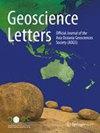机器学习方法在非线性耦合数据同化中的有效性
IF 4.3
3区 地球科学
Q1 GEOSCIENCES, MULTIDISCIPLINARY
引用次数: 0
摘要
在耦合地球系统模式中实施强耦合数据同化(SCDA)仍然具有很大的挑战性,这主要是由于需要准确估计耦合交叉背景-误差协方差。在这项工作中,我们通过简化的两变量一维同化试验,重点研究热带太平洋上空的海气相互作用,旨在阐明基于方差-协方差相关性的 SCDA(如基于集合的 SCDA)在处理跨球变量之间固有的非线性关系方面存在局限性,并且只能提供包含线性信息的背景矩阵。这些局限性也会导致分析分布偏离事实,并误判罕见极端事件的强度。然而,在 SCDA 上应用数据驱动的机器学习(ML)方法(如多层感知器),可以摆脱线性或高斯假设,避免显式计算背景矩阵,从而规避昂贵的矩阵运算。与传统的基于集合的同化策略相比,这种策略具有全面的优越性能,特别是在表示跨球变量之间的强非线性关系和再现长尾分布方面,这有助于捕捉小概率事件的发生。该方法还被证明具有成本效益,而且在为耦合模式生成更准确的初始条件方面具有巨大潜力,尤其是在促进极端事件的预测任务方面。本文章由计算机程序翻译,如有差异,请以英文原文为准。
The effectiveness of machine learning methods in the nonlinear coupled data assimilation
Implementing the strongly coupled data assimilation (SCDA) in coupled earth system models remains big challenging, primarily due to accurately estimating the coupled cross background-error covariance. In this work, through simplified two-variable one-dimensional assimilation experiments focusing on the air–sea interactions over the tropical pacific, we aim to clarify that SCDA based on the variance–covariance correlation, such as the ensemble-based SCDA, is limited in handling the inherent nonlinear relations between cross-sphere variables and provides a background matrix containing linear information only. These limitations also lead to the analysis distributions deviating from the truth and miscalculating the strength of rare extreme events. However, free from linear or Gaussian assumptions, the application of the data-driven machine learning (ML) method, such as multilayer perceptron, on SCDA circumvents the expensive matrix operations by avoiding the explicit calculation of background matrix. This strategy presents comprehensively superior performance than the conventional ensemble-based assimilation strategy, particularly in representing the strongly nonlinear relationships between cross-sphere variables and reproducing long-tailed distributions, which help capture the occurrence of small probability events. It is also demonstrated to be cost-effective and has great potential to generate a more accurate initial condition for coupled models, especially in facilitating prediction tasks of the extreme events.
求助全文
通过发布文献求助,成功后即可免费获取论文全文。
去求助
来源期刊

Geoscience Letters
Earth and Planetary Sciences-General Earth and Planetary Sciences
CiteScore
4.90
自引率
2.50%
发文量
42
审稿时长
25 weeks
期刊介绍:
Geoscience Letters is the official journal of the Asia Oceania Geosciences Society, and a fully open access journal published under the SpringerOpen brand. The journal publishes original, innovative and timely research letter articles and concise reviews on studies of the Earth and its environment, the planetary and space sciences. Contributions reflect the eight scientific sections of the AOGS: Atmospheric Sciences, Biogeosciences, Hydrological Sciences, Interdisciplinary Geosciences, Ocean Sciences, Planetary Sciences, Solar and Terrestrial Sciences, and Solid Earth Sciences. Geoscience Letters focuses on cutting-edge fundamental and applied research in the broad field of the geosciences, including the applications of geoscience research to societal problems. This journal is Open Access, providing rapid electronic publication of high-quality, peer-reviewed scientific contributions.
 求助内容:
求助内容: 应助结果提醒方式:
应助结果提醒方式:


